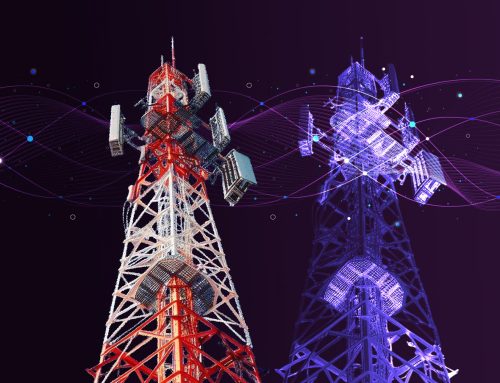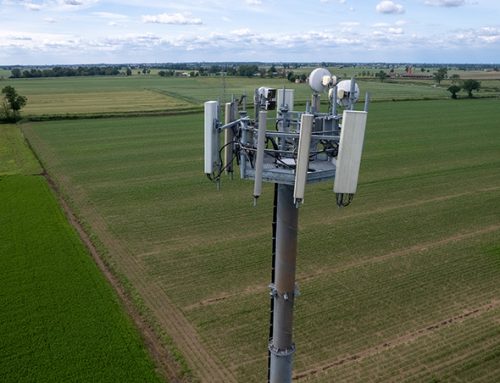Introduction
In the era of telco disaggregation, communication service providers are increasingly committed to a multi-vendor strategy to enhance agility. The ability to mix and match different vendors and technologies has opened new opportunities for CSPs to innovate and shorten the time to market.
However, a multi-vendor network can introduce complexities to network management for telecom operations. At the same time, the phenomenal surge in data consumption over telecom networks is set to nearly triple [1], adding more pressure on CSPs to deliver critical applications and services seamlessly.
Although network assurance acts as an integrator (by combining various monitoring and automation capabilities) to ensure minimum network downtime and performance degradation, it could be challenging for manual oversight and traditional tools to match the speed and scale of a network’s operational behaviour.
AI in network assurance can play a proactive role in identifying and fixing inconsistencies to ensure the reliability of telecom networks. Still, before onboarding AI to transform telecom assurance from reactive maintenance to proactive network management, service providers must ensure that the AI system is non-intrusive. It should seamlessly integrate with existing processes without disturbing day-to-day operations.
When such a system is onboarded, telcos can witness AI alarm correlation that automatically makes sense of the noise, grouping redundant alarms and pinpointing the likely cause of the problem. This results in savings – time, effort and money.
Challenges in Telecom Network Assurance
The increasing dynamicity introduced by virtual and cloud-native networks offers unprecedented opportunities for CSPs to deliver highly reliable, high-performance networks and services. Despite its potential, some challenges remain.
System Integration and Data Silos
Larger CSPs have a myriad of systems for monitoring and reporting network quality and its impact on services. These systems are often obtained from multiple technology vendors and suppliers, so integrating them to provide a unified view of network performance can be challenging.
Consequently, data storage and management systems remain in silos and inaccessible. This lack of a single version of truth slows the decision-making process and increases the risk of errors.
Alarm Overload and Manual Intervention
Network management has become a complex task in the last decade, requiring expert operations teams and complex tools. With networks generating thousands of alarms from multi-domain networks each day, it is nearly impossible for the operations staff to keep up. As per a report by Analysys Mason, almost 65% of networks are still handled manually [2], leading to longer MTTR (Mean Time to Repair) and increased operational costs.
Identifying which alarms are critical and which are simply noise becomes a time-consuming and overwhelming task. Naturally, this leaves room for human error to creep in. Human-error-related network failures are mostly caused either by teams failing to follow procedures or by faulty procedures. Not surprisingly, CSPs are eager to find remedies to reduce human error.
Service Providers need AI-powered Telecom Assurance to Improve Network Reliability
- Multi-domain alarm correlation
Many companies with large networks have a mix of legacy and modern equipment and often have an inordinate number of alarms which can be difficult for teams to understand, classify and prioritize the troubleshooting process.
The hierarchical structure of telecommunication networks further complicates matters. With multiple layers in the network architecture’s layers (core, distribution, access, aggregation, etc.) and the encompassing multi-OEM components, faults can arise at any point.
When an event occurs, alarms can flood in from different layers and domains, creating an ‘event storm’ that generates hundreds (and sometimes thousands) of redundant alarms from interconnected systems, making it difficult to pinpoint the root cause.
For instance, a fibre cut in the transport network. This single event can generate alarms not only within the transport layer but across the mobile and fixed access networks, as dependent services fail. Without multi-domain alarm correlation, network operators may find themselves addressing peripheral symptoms rather than the underlying issue, wasting valuable time and resources.
When paired with an AI-powered automation remedy, telcos can rapidly analyze alarms from across the network, accurately isolating the root cause.
- Network predictive maintenance
Network predictive maintenance is a popular AI use case for telcos to invest. Telcos collect a massive amount of data from a variety of sources – directly from the nodes, network management systems or third-party vendors.
Next, by applying machine learning, operational data analytics and continuous asset monitoring, the data is analysed to identify patterns and trends that precede network failures. This helps to build a picture of the current condition of the network elements instead of what the condition could be based on a historical timeline.
By anticipating failures, service providers can reduce scheduled maintenance visits, reducing maintenance and operating costs, and improving the reliability of the networks. Consequently, companies can get improved metrics MTTD (Mean Time to Detect) and MTTR.
- Gen-AI assistance in NOC operations
Telecom companies are challenged with NOC engineers spending significant time and effort manually reviewing alarms, network topology, performance indicators, and network or service transactional data to diagnose and resolve issues quickly.
This complexity often leads to obstacles that L1 engineers may be unable to resolve independently and require the support of the next level of backend network engineers. This results in frequent network downtime and higher operating costs.
Service providers can leverage Gen-AI solutions, such as an LLM-powered dialog agent, which serves as intelligent knowledge workers helping L1 support teams resolve network-related issues quickly.
Conversational chatbots are one of the most popular gen-AI use cases. With gen-AI NOC bots, NOC engineers can –
- Get instant access to information from knowledge bases
- Follow a guided step-by-step process for troubleshooting
- Create custom dashboards and reports for trend analysis to forecast future network performance or potential issues
- AI-based network topology
The ever-increasing traffic can be managed from the existing network topology by establishing a proactive and data-driven approach to optimization. By analyzing real-time traffic patterns and historical data, AI enables operators to predict demand spikes and allocate resources dynamically, minimizing congestion and enhancing performance.
AI-driven traffic engineering can automatically reroute data across the most efficient paths, reducing bottlenecks and improving user experience. In 5G networks, AI plays a pivotal role in managing network slicing, ensuring that bandwidth is allocated according to the specific needs of services, even as traffic volumes surge.
Beyond traffic optimization, AI enhances automation and security—key factors in maintaining service reliability in an era of exponential data growth. AI-powered load balancing ensures traffic is distributed efficiently across network components, while predictive maintenance and self-healing systems reduce downtime and operational costs.
Furthermore, AI’s anomaly detection capabilities bolster network security by identifying and mitigating potential threats, such as DDoS attacks, before they impact performance. These AI-driven capabilities enable operators to scale effectively while maintaining network resilience.
Benefits of AI-powered service assurance [3]
- Automated problem detection, correlation, and root-cause analysis replace manual problem identification and diagnostics.
- Automated assurance makes managing networks more cost-effective, with a 50x reduction in the volume of anomalies needing manual analysis and intervention, enabling a 30% OPEX saving for cloud-based service operations.
- Problem detection time is accelerated (90% reduction in MTTD and RCA), resulting in fewer problems going unnoticed or unactioned until they impact customers.
- MTTR is improved by 37%, resulting in improved customer experience and an improved NPS from customers.
Before Getting Started with AI for Telecom AssuranceIntegrating AI into network operations is a worthwhile endeavor that can result in efficiency and accuracy. However, it has its fair share of challenges. In a previous blog, we presented how data quality hampers the application of AI. Additionally, the main challenges in applying AI for network operations include:
|
Conclusion
AI is revolutionizing the telecom industry by addressing critical service assurance challenges, from reducing alarm noise to predicting network faults. Its ability to automate complex processes, enhance operational efficiency, and improve customer satisfaction makes it a must-have tool for modern service providers.
As the telecom landscape evolves, CSPs that embrace AI will be better positioned to meet rising customer expectations, reduce operational costs, and stay ahead of the competition. The future of telecom service assurance lies in leveraging AI to create more efficient, agile, and reliable networks.
—
[1] – PwC – Telecom Outlook Perspectives https://www.pwc.com/gx/en/industries/tmt/telecom-outlook-perspectives.html
[2] [3] – TM Forum – Revolutionizing service assurance through AI powered, intent-based systems for continuity and customer satisfaction

























![Telco Cloud: A Key Enabler to Telco Transformation [Part 1]](https://www.tatacommunications-ts.com/wp-content/uploads/2023/06/Telco-Cloud-blog_image-1-500x383.png)




